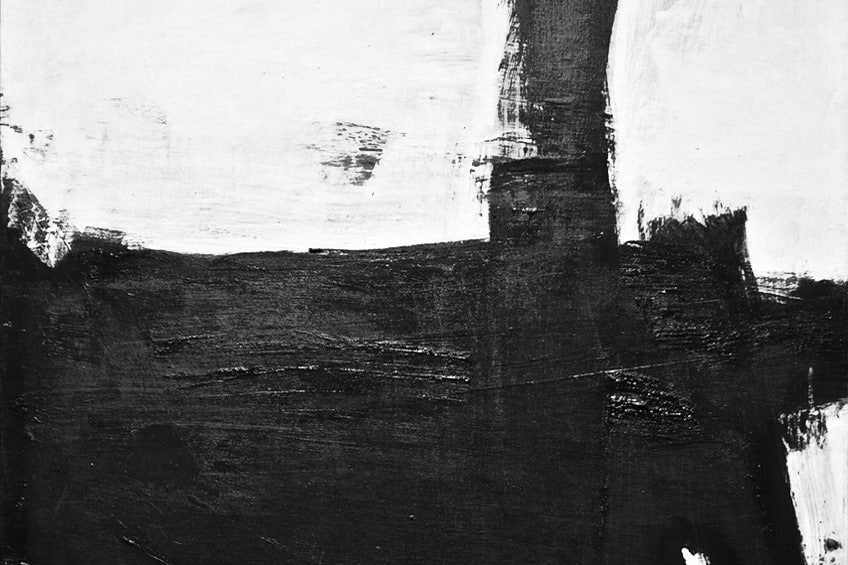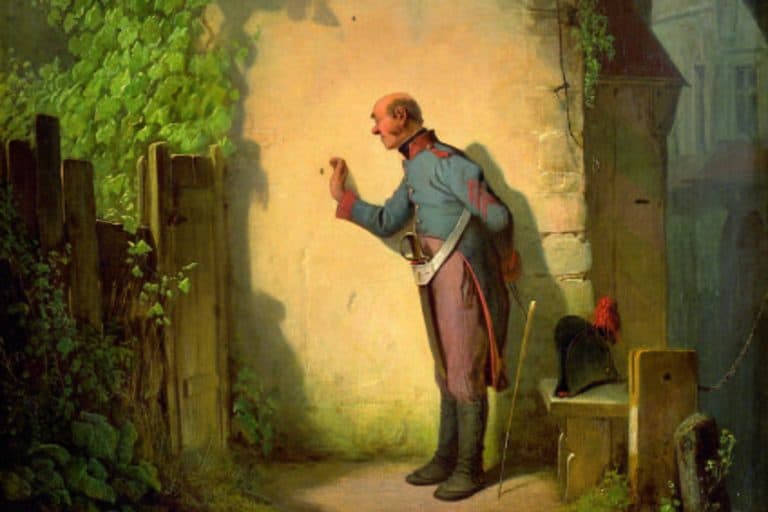Franz Kline – Learn About the Abstract Expressionist Painter
Delving into the artistic legacy of Franz Kline, we uncover a captivating world of bold strokes, dramatic contrasts, and raw emotion. As one of the prominent figures of Abstract Expressionism, Franz Kline’s paintings continue to leave an indelible mark on the art world. Through his unique approach to abstract art, Kline’s masterful compositions evoke powerful emotions and invite viewers to explore the depths of their own perceptions. In this article, we embark on a journey through Franz Kline’s art, exploring his biography, the evolution of his distinctive style, and the enduring impact of his creative vision.
Franz Kline’s Biography
| Date of Birth | 23 May 1910 |
| Date of Death | 13 May 1962 |
| Place of Birth | Wilkes-Barre, Pennsylvania, United States |
| Nationality | American |
| Associated Art Movements | Abstract Expressionism, Modern art, and Action painting |
Franz Kline was born on May 23, 1910, in Wilkes-Barre, Pennsylvania. Growing up in a working-class family, he experienced the industrial landscape of Pennsylvania, which would later inspire his iconic artistic style. Kline’s early exposure to the coal mines and steel mills instilled in him a fascination with bold lines, dynamic forms, and the raw energy of industrial structures.
Influences
Kline’s artistic influences were diverse and came from various sources. During his youth, he was exposed to the works of the Ashcan School, which depicted scenes of urban life in New York City. The raw and gritty depictions of city life in these paintings resonated with Kline and influenced his early artistic sensibilities.
He was also drawn to the works of the European modernists, such as Cézanne (1839 – 1906) and Matisse (1869 – 1954), whose bold use of color and form left a lasting impression on his artistic development.
Training and Early Artworks
Kline studied art at the School of Art and Design at Boston University and the Heatherley School of Fine Art in London. He initially experimented with representational and figurative styles. However, in the late 1940s, Kline underwent a profound artistic transformation, shifting towards abstraction and exploring the potential of large-scale black-and-white compositions. These early black-and-white paintings laid the groundwork for his later breakthrough in Abstract Expressionism.
Major Career Achievements
Franz Kline’s career reached its pinnacle in the 1950s and 1960s when he achieved widespread recognition for his unique contributions to Abstract Expressionism. He held numerous successful exhibitions in major galleries and museums, solidifying his position as a leading figure in the New York art scene.
Kline’s bold and gestural brushwork, characterized by powerful black strokes against white backgrounds, garnered both critical acclaim and public fascination.
His Influence on Abstract Expressionism and Action Painting
Franz Kline played a crucial role in the Abstract Expressionist movement, which emerged in the United States after World War II. Abstract Expressionism was distinguished by its emphasis on spontaneous and emotional expression, emphasizing the artist’s inner feelings and thoughts.
Kline’s approach to “Action painting” aligned perfectly with the movement’s principles, as he believed in the immediacy of the artistic act and the liberation of the creative process. He is celebrated for his large-scale canvases that exude energy, emotion, and a sense of urgency, inviting viewers to experience the power and intensity of the artist’s actions.
Art History in General
Franz Kline’s impact on art history is indelible, as he played a vital role in shaping the trajectory of Abstract Expressionism. Alongside other prominent figures like Jackson Pollock (1912 – 1956) and Willem de Kooning (1904 – 1997), Kline challenged traditional artistic conventions and opened up new possibilities for artistic expression. His bold and gestural paintings continue to be celebrated as exemplars of Abstract Expressionism, influencing subsequent generations of artists seeking to explore the boundaries of artistic spontaneity and emotional expression.
Kline’s legacy endures as proof of the life-changing force of art and its capability to convey profound human experiences through the language of abstraction.
Franz Kline’s Art: A Reflection of the American Socio-Political Climate
Franz Kline created a body of work that both responded to and reflected the socio-political climate of mid-20th century America. As a prominent artist during a time of significant cultural shifts and political upheaval, Kline’s paintings not only embodied the spirit of Abstract Expressionism but also bore witness to the changing social fabric of the nation. This section of the article delves into how Franz Kline’s art was contextualized within the American socio-political climate of his era, examining the key influences that shaped his career and artistic vision.
The Rise of Abstract Expressionism
The post-World War II era witnessed the emergence of Abstract Expressionism, an art period that placed New York City at the center of the art sphere. The 1940s and 1950s were characterized by the height of the Cold War, the civil rights campaign, and important social transformations.
Abstract Expressionist artists, including Franz Kline, sought to create a new visual language that expressed the inner emotions and psyche of the individual artist while also reflecting the collective anxieties and aspirations of a society grappling with profound changes.
The Urban Experience
Kline’s early years were shaped by his upbringing in the industrial landscape of Pennsylvania, surrounded by the imposing coal mines and steel mills. These industrial structures left a lasting imprint on his artistic sensibilities. Moving to New York City in the 1930s, he became immersed in the bustling urban environment, which influenced his later artistic style.
The energy and dynamism of the city found expression in Kline’s large-scale black-and-white paintings, evoking a sense of movement and intensity reflective of the urban experience.
The Action Painting Aesthetic
Kline’s artistic approach aligned with the principles of “Action painting,” a subcategory of Abstract Expressionism. He embraced the idea of capturing the immediacy of artistic creation, where the act of painting became a performance, a physical and emotional release. By employing bold and gestural brushstrokes, Kline infused his paintings with raw and spontaneous energy, embodying the tumultuous emotions of the era.
Abstract Expressionism and National Identity
In the context of the Cold War, Abstract Expressionism became a significant cultural force in America’s global projection of its values and identity. The movement’s emphasis on individuality and emotional expression stood in contrast to the propagandistic art of the Soviet Union.
As Abstract Expressionism gained international recognition, artists like Kline played a pivotal role in defining American art and asserting the nation’s artistic independence.
Addressing Social Realities
While Abstract Expressionism was often associated with a detachment from reality, Kline’s paintings hinted at the broader social concerns of his time. The boldness and immediacy of his compositions conveyed a sense of urgency that mirrored the pressing issues of civil rights, racial tensions, and the struggle for equality. In this sense, Kline’s art served as a subtle commentary on the social realities of his era.
Franz Kline’s Art
Franz Kline’s art is characterized by a distinct set of technical characteristics that exemplify his innovative approach to abstract expressionism. One of the most striking aspects of his work is his use of bold and gestural brushstrokes, which create a dynamic interplay of contrasting black and white forms on large-scale canvases.
Kline’s deliberate and spontaneous application of paint evokes a sense of immediacy as if capturing the energy of the artistic act in the moment of creation.

He often used house painting brushes and other unconventional tools, enabling him to achieve a visceral texture and depth in his paintings. The strong contrast between black and white enhances the dramatic impact of his compositions, with the stark lines and shapes exuding a sense of raw emotion and intensity. Kline’s technical mastery lies in his ability to convey powerful emotions through seemingly simple yet bold and dynamic visual elements, leaving a lasting impression on viewers and cementing his legacy as a pioneering figure in the world of abstract expressionism.
Franz Kline’s Painting: Visual and Conceptual Analysis of Mahoning (1956)
| Title | Mahoning |
| Date | 1956 |
| Medium | Oil and paper on canvas |
| Dimensions (cm) | 204.2 × 255.3 |
| Art Movement | Abstract Expressionism |
| Location | Whitney Museum of American Art, New York City, United States |
Franz Kline’s masterpiece, Mahoning (1956), exemplifies the raw energy and emotional intensity that characterize his iconic abstract expressionist style. In this monumental black-and-white painting, Kline’s distinctive technical approach and evocative use of form converge to create a visually captivating and emotionally charged experience.
Visual Analysis
Mahoning is a striking example of Kline’s assertive and gestural brushwork. The massive black brushstrokes intersect and overlap with each other, creating a dynamic interplay of shapes and lines that draw the viewer’s gaze into the heart of the composition. The powerful brushwork is evident in the thick, expressive strokes, which exude a sense of urgency and spontaneity.
Contrasting Forms
The stark contrast between the black and white areas of the canvas commands immediate attention. The use of negative space enhances the impact of the black brushwork, evoking a sense of tension and drama. The contrasting forms play off each other, creating a visual rhythm and an almost musical cadence that resonates throughout the painting.
Monumental Scale
Mahoning is imposing in its size, inviting the viewer to immerse themselves fully in its captivating presence. The large-scale canvas accentuates the dynamic energy of the artwork, enveloping the audience in an emotive and immersive experience.
Conceptual Analysis
The emotional intensity of Mahoning is palpable, revealing the profound emotional expression inherent in Kline’s abstract expressionist works. The bold brushwork and contrasting forms seem to convey a sense of inner turmoil and raw emotion, inviting viewers to connect with the artist’s state of mind at the moment of creation.
Invoking the Industrial Landscape
Kline’s upbringing in the industrial landscape of Pennsylvania comes to the fore in Mahoning. The sweeping black forms evoke the powerful presence of the steel mills and coal mines, where Kline’s childhood memories were shaped.
The painting becomes a visual manifestation of the energy and dynamism of industrialization, transformed into an expressive and poetic abstract form.
Spontaneity and Creative Act
The spontaneous and gestural nature of Kline’s brushwork in Mahoning highlights the closeness of the creative act in his artworks. As viewers witness the artist’s dynamic engagement with the canvas, they are brought into the very essence of artistic creation. The painting becomes a testament to the liberation and emotive power that abstract expressionism sought to convey.
In conclusion, Franz Kline’s artistic legacy continues to resonate throughout the art world, leaving an unforgettable mark on Abstract Expressionism and Modern art. His bold and gestural brushwork, evident in his iconic Franz Kline paintings, remains a testament to his mastery of artistic expression and emotional intensity. Through the exploration of his Franz Kline art and comprehensive Franz Kline biography, we have gained insight into the profound influences that shaped his creative journey. Kline’s contributions to the art world extend beyond mere aesthetics; his work embodies a powerful convergence of personal expression and societal engagement. As we reflect on his enduring impact, Franz Kline’s art serves as an inspiration to artists and art enthusiasts alike, underscoring the transformative potential of art in capturing the essence of human emotion and sparking meaningful dialogue across generations.
Frequently Asked Questions
What Makes Franz Kline’s Paintings Special?
Franz Kline’s paintings are renowned for their distinctive and emotive qualities that set them apart in the world of modern art. What makes Kline’s artworks special is his bold and gestural brushwork, which infuses each canvas with natural and intuitive energy. The decisive disparity between black and white forms adds an element of drama and suspense, inviting viewers into an immersive adventure. Through his abstract expressionist style, Kline masterfully conveys profound emotions and invites audiences to connect with his inner world. His paintings exude a sense of urgency and immediacy, capturing the essence of the creative act and leaving an indelible mark on the history of art.
What Is Action Painting?
Action painting, also known as gestural abstraction, is a prominent art movement that emerged in the mid-20th century, particularly associated with the Abstract Expressionist movement. The essence of action painting lies in its emphasis on the procedure of making art instead of the final outcome. In this style, artists apply paint with proactive and automatic brushstrokes, often using strange tools and techniques to achieve a visceral and dynamic effect on the canvas. The act of painting becomes a performance, with the artist’s physical gestures and emotions infusing the artwork with a sense of energy and immediacy. Action painting seeks to capture the essence of artistic expression, spontaneity, and emotional intensity, inviting viewers to experience the artist’s creative journey in real-time. Iconic artists like Jackson Pollock and Franz Kline are celebrated for their contributions to the action painting movement, leaving a lasting impact on the world of modern art.
Nicolene Burger is a South African multi-media artist, working primarily in oil paint and performance art. She received her BA (Visual Arts) from Stellenbosch University in 2017. In 2018, Burger showed in Masan, South Korea as part of the Rhizome Artist Residency. She was selected to take part in the 2019 ICA Live Art Workshop, receiving training from art experts all around the world. In 2019 Burger opened her first solo exhibition of paintings titled, Painted Mantras, at GUS Gallery and facilitated a group collaboration project titled, Take Flight, selected to be part of Infecting the City Live Art Festival. At the moment, Nicolene is completing a practice-based master’s degree in Theatre and Performance at the University of Cape Town.
In 2020, Nicolene created a series of ZOOM performances with Lumkile Mzayiya called, Evoked?. These performances led her to create exclusive performances from her home in 2021 to accommodate the mid-pandemic audience. She also started focusing more on the sustainability of creative practices in the last 3 years and now offers creative coaching sessions to artists of all kinds. By sharing what she has learned from a 10-year practice, Burger hopes to relay more directly the sense of vulnerability with which she makes art and the core belief to her practice: Art is an immensely important and powerful bridge of communication that can offer understanding, healing and connection.
Nicolene writes our blog posts on art history with an emphasis on renowned artists and contemporary art. She also writes in the field of art industry. Her extensive artistic background and her studies in Fine and Studio Arts contribute to her expertise in the field.
Learn more about Nicolene Burger and the Art in Context Team.
Cite this Article
Nicolene, Burger, “Franz Kline – Learn About the Abstract Expressionist Painter.” Art in Context. August 30, 2023. URL: https://artincontext.org/franz-kline/
Burger, N. (2023, 30 August). Franz Kline – Learn About the Abstract Expressionist Painter. Art in Context. https://artincontext.org/franz-kline/
Burger, Nicolene. “Franz Kline – Learn About the Abstract Expressionist Painter.” Art in Context, August 30, 2023. https://artincontext.org/franz-kline/.











